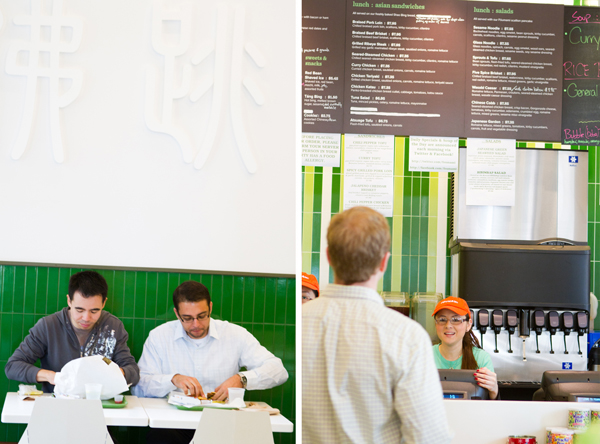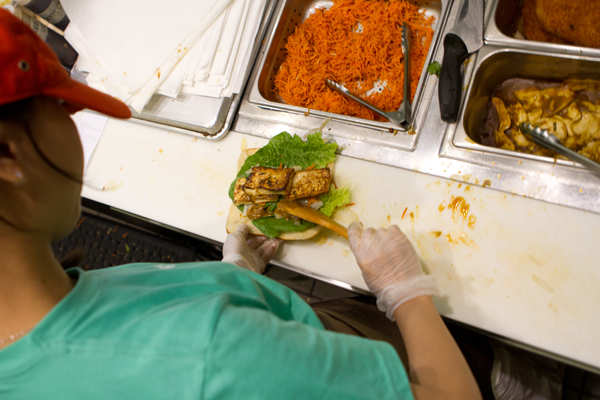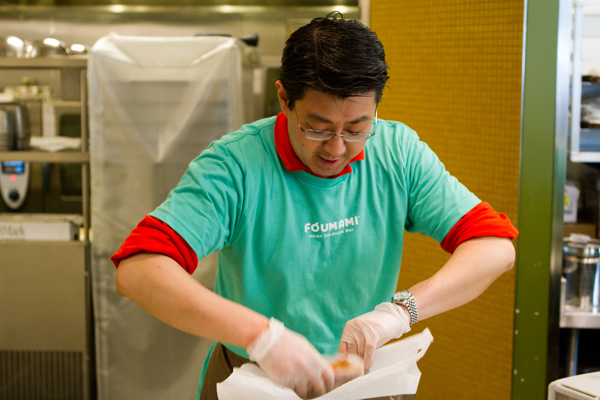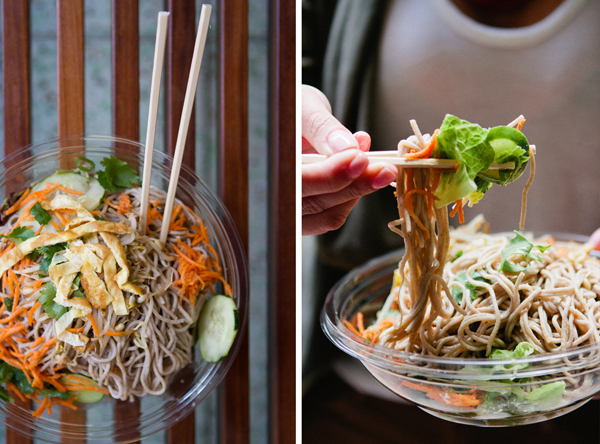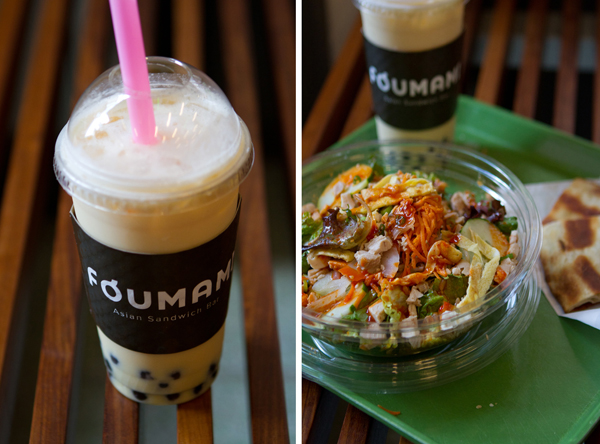Rush Hour: How Foumami Feeds the Financial District Lunch Crowds
Watching the line at Foumami, an Asian-fusion sandwich shop in the heart of the Financial District, can be a bit dizzying. Employees zig-zag around one another, reaching, grabbing, slicing and wrapping… all to make sure that the sandwiches and salads they’re making are not only perfectly constructed, but that they reach customers’ hands quickly.
One of these individuals working to ensure this happens is Foumami’s creator, Michael Wang, who stands at the end of the line, packaging and handing out each customer’s order. It is rare to go into a “fast food” establishment and see the owner standing in the store, which makes seeing Wang working alongside his employees even more impressive.
The restaurant concept is near and dear to Wang, as the food and beverages are constructed based on the flavors he grew up with. But it’s obvious that Wang, a graduate of Harvard University’s MBA program, knows that Foumami’s success is determined not just by the menu, but by the operation as a whole. Everything, from the location of the racks of their fresh-baked bread for their spicy pork loin sandwich to the positioning of each printer placed directly in front of the staff member working in their designated station, was done, as Wang says, to “achieve maximum output and speed of service to customers.” Watch how Wang’s carefully designed concept functions in the photos ahead.
Wang uses a deliberate system to control line logistics. “My past restaurant experience, coupled with research conducted while I was a student at Harvard, provided me with a good idea on how the line should flow,” he says. “I spent countless hours studying competitors, best practices, failures, operations in general. Everything you see on our line – from the three large glass panels to the bread rack on the back wall – was put there deliberately to serve a distinct purpose.”
“When we first opened, I had double the staff working on the line versus what you see now,” Wang says. “I found that more staff isn’t directly correlated with faster or better service. In fact, number of staff and speed of service can be mutually exclusive up to a certain point, and may even lead to an inversely correlated event. Less staff working on the line, but much higher quality of staff is key, [and] this is how we operate now.”
An employee preps a flash-fried curried tofu sandwich. The biggest seller at Foumami alternates daily between the grilled ribeye steak, chicken katsu and chicken teriyaki ‘wiches. According to Wang, though, the spicy pork loin sandwich, a take on the banh mi, is starting to make a run for the title. As for how many the staff churns out a day? Wang says he can’t disclose a hard figure, but it’s “a few hundred sandwiches daily.”
Foumami owner Michael Wang works the line with his staff.
A complete spicy pork loin sandwich, served on crackly shao bing bread. “We do give extra special attention and care to the making and baking of our shao bing bread, and also the scallion pancake bread, which are both hand-made daily,” Wang says. “My family has a lot of experience making this bread, especially since my our ancestral home is China’s Shandong province, well-known for its dough-based products such as noodles, dumplings and shao bing, a distinctive bread that’s crisp and flaky on the outside, and soft and chewy inside.”
The sesame noodle salad at Foumami is a lightened-up take on the oil-slicked sesame noodles you often find at Chinese restaurants. “We made the dish into a salad, since we felt it fit better with the lifestyle of our core customers,” Wang says. In addition to soba noodles, there’s also sautéed bean sprouts, a sliced egg omelet, cucumbers, carrots, scallions, cilantro, and house-made sesame-peanut dressing.
At left, mango bubble tea. Right, a bibimbab salad, which is a healthier take on the classic Korean egg, vegetable, and rice dish. Foumami’s version uses brown rice instead of white (and less of it), more vegetables, lean protein and a spicy bibimbap dressing.
